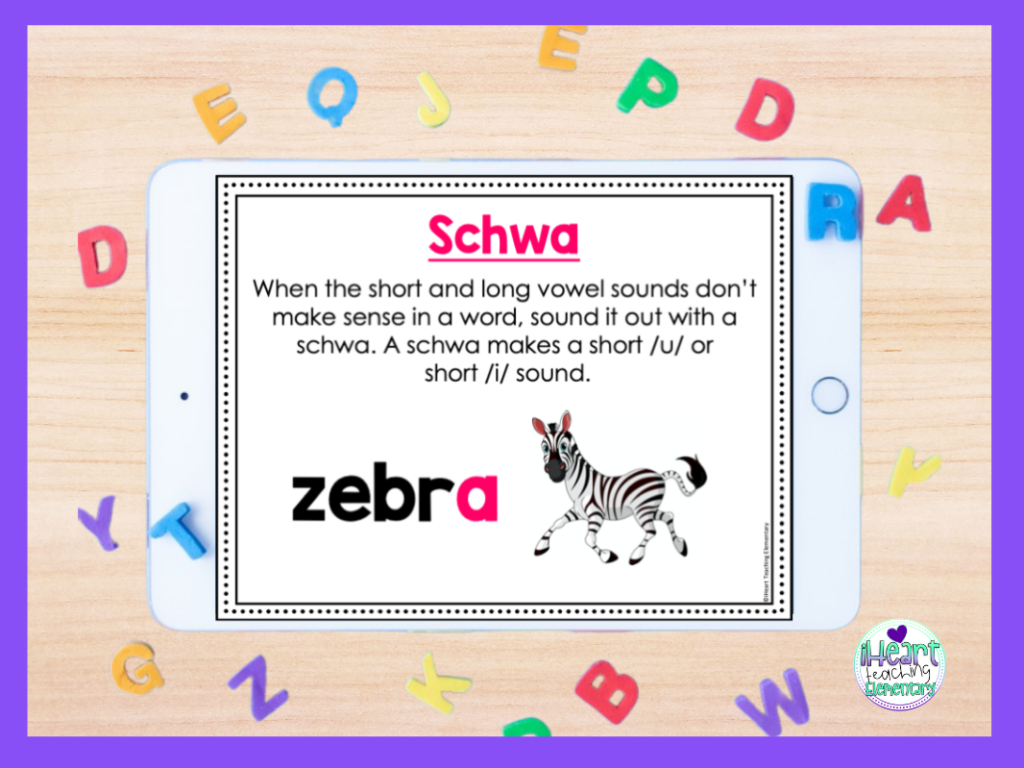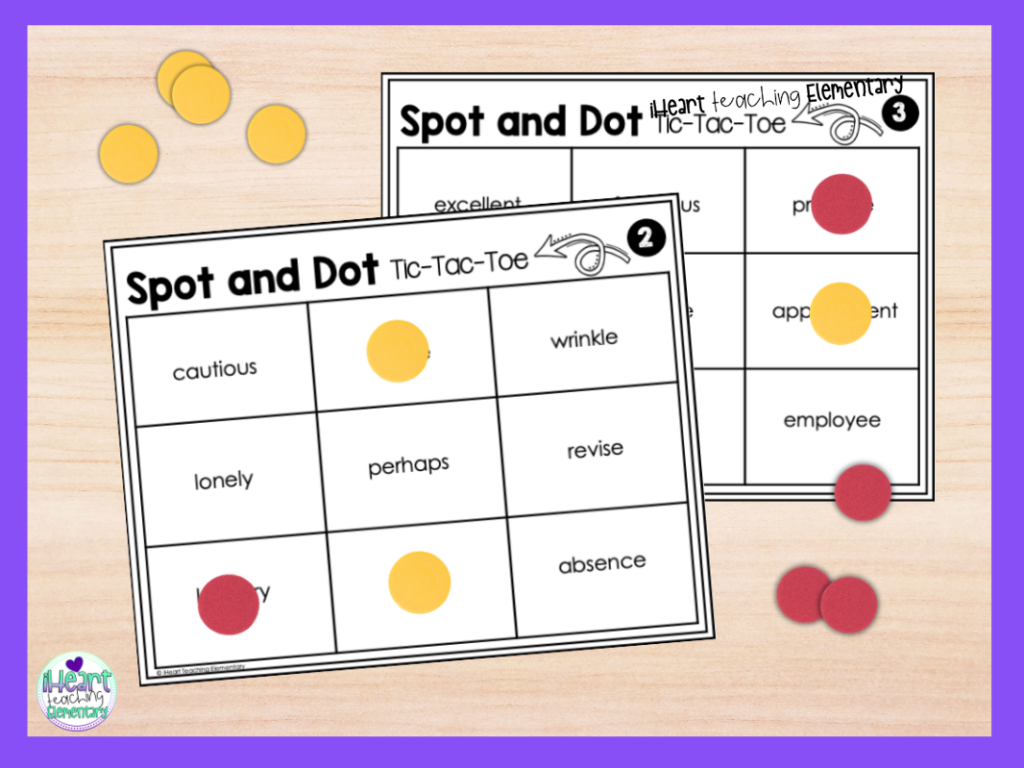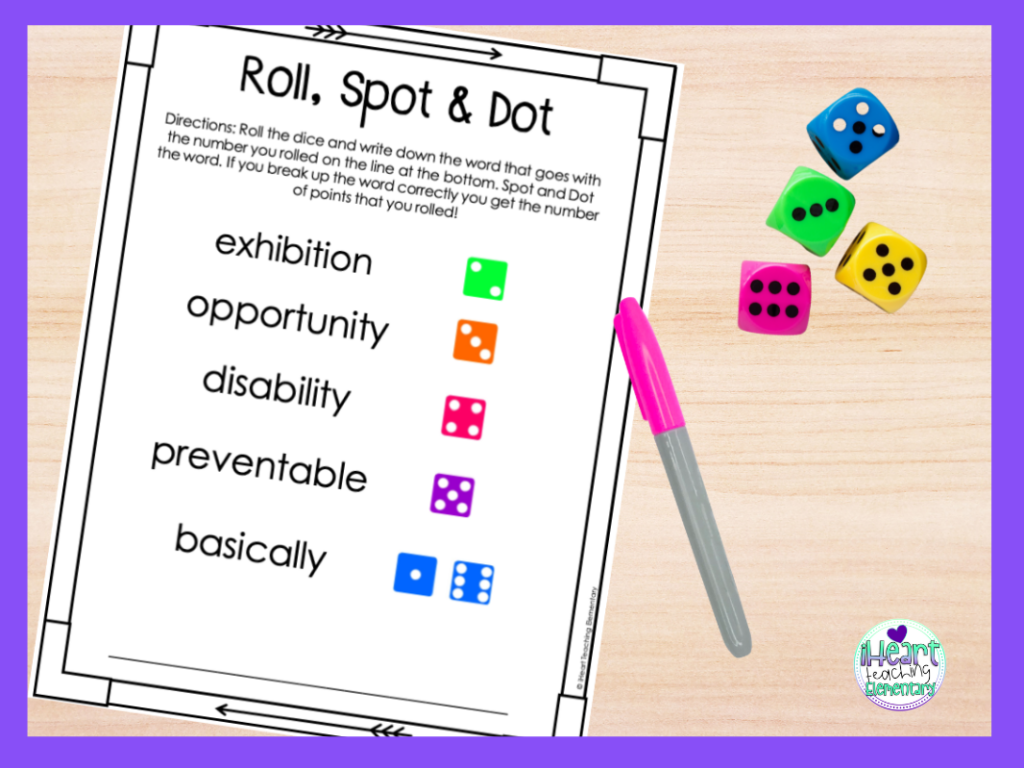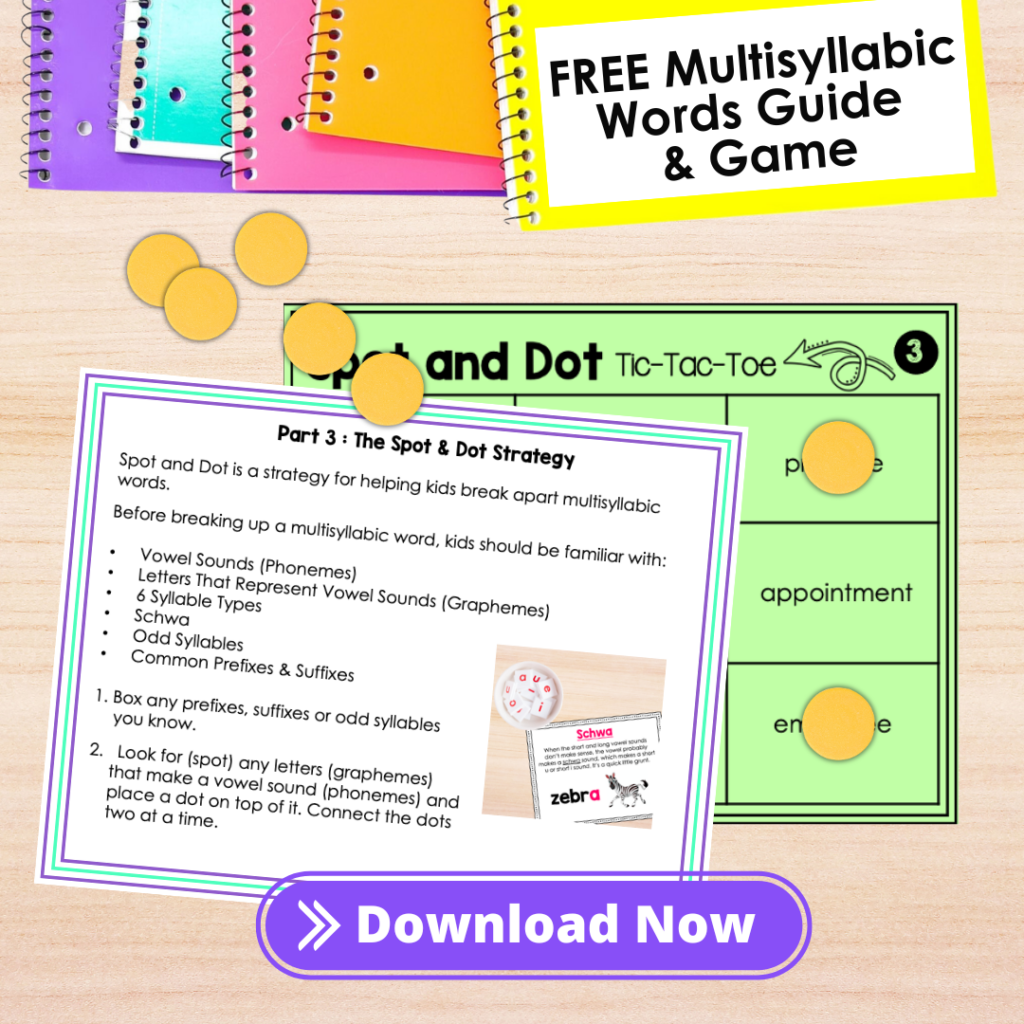The schwa sound in words is one of the most common in the English language and yet it’s the trickiest to teach.
The schwa sound is a weak unstressed sound that occurs in multisyllabic words. It’s a sound that any of the vowels can make.
The easiest way to explain it to kids is to tell them that most of the time it makes a short /u/ or short /i/ sound.
How to Help Kids Figure Out the Schwa Sound
Since the schwa sound is one of the trickiest sounds to teach, I like to keep it simple when I teach it to kids.
After teaching the most common vowel sounds, the last thing I teach is the schwa sound. I use the poster with the zebra as an example.

I tell kids that if they are reading a multisyllabic word, and neither the long or short vowel sounds make sense for that particular vowel, try the schwa which is a short /u/ or /i/ sound.
For example, just say the child is trying to read the word balloon. The long /a/ and short /a/ sounds do not make sense when trying to say balloon. So instead, use the short /u/ sound: /bul-loon/.
Another example is the word problem. When you read the word problem with a short /e/ or long /e/ sound, it doesn’t make sense. But when you read it with the schwa sound, it makes sense: /prob-lum/.
Schwa Sounds Word List
Here are 3 examples of the schwa sound for the vowels a, e, i and o:
Words with the Vowel A:
- about
- local
- human
Words with the Vowel E:
- system
- item
- celebrate
Words with the Vowel I:
- family
- duplicate
- president
Words with the Vowel O:
- occur
- freedom
- parrot
How to Practice
Kids will need practice once they learn the schwa sound. You’ll want to give them practice where the schwa sound is found in words with all kinds of vowels.
This is especially important when they are learning how to decode multisyllabic words.
The more kids practice, the better they will get at decoding big words with a schwa sound during their independent reading.
A fun way to help kids practice during small group instruction is to create a tic-tac-toe board with multisyllabic words. Add in some words that have the schwa sound.

Kids can play against each other or you. They pick a word and break it apart by syllables using the Spot and Dot method I talk about in this post.
If they break it apart correctly, they get to put an X or O on that spot. If not, they don’t get to cover that word. Their goal is to get 3 in a row.
Another easy activity is to create a list of 6 multisyllabic words. Include some schwa words and put a number next to each word.

The child rolls the di and has to decode the word that matches the number on the di.
Once they finish that word, they roll again to see what word they’ll decode next. It’s super simple but kids like it because of the added fun of the dice.
Daily Practice During Independent Reading
Students can practice daily during independent reading time. All they need is a pad of sticky notes.
Right before independent reading, have students take out their sticky notepad and a pencil. Remind them that when they get to an unknown word, they can get a sticky note, and try to break apart the word.
Having the notepad out gives them a visual reminder and makes it easier for them to quickly stop and break apart the word.
I hope you found some helpful tips for teaching the schwa sound in words. If you’re not sure how to fit in decoding practice for multisyllabic words, check out this post with 3 ideas for fitting it in.





Is there a way to get the zebra poster?
Hi Lisa, I was having a problem with spam and your comment was mixed in. I apologize for not getting back to you earlier. If you still need this resource, I can email you a link to the product. Email me at [email protected]